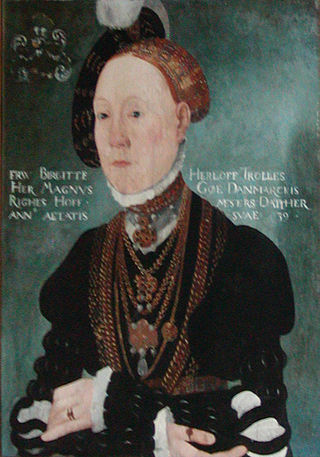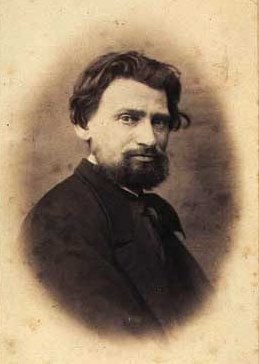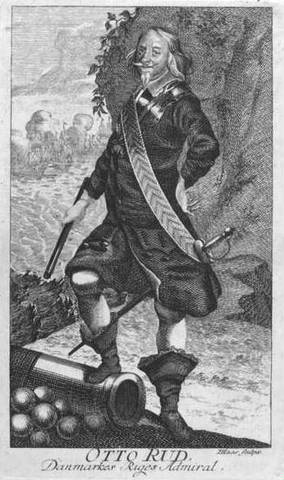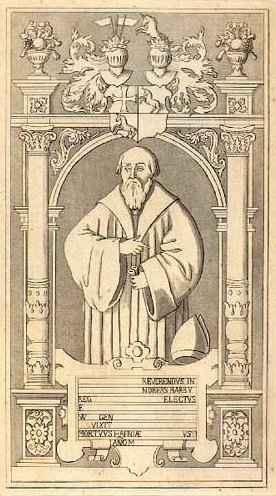
Niels Juel was a Danish admiral and naval hero. He served as supreme command of the Dano-Norwegian Navy during the late 17th century and oversaw development of the Danish-Norwegian Navy.

Herluf Trolle was a Danish naval hero, Admiral of the Fleet and co-founder of Herlufsholm School, a private boarding school at Næstved on the island of Zealand in Denmark.
Mogens Gøye was a Danish statesman and Steward of the Realm, whose enormous wealth earned him the derogatory nickname "the King of Northern Jutland". Gøye was the Royal councillor of Danish Kings John I, the feuding Christian II and Frederick I, and Christian III. He was a key supporter of the Reformation in Denmark-Norway and Holstein. Often lauded by elder Danish historians as a knightly, social liberal upper-class idealist, Gøye is today viewed as a realist statesman understanding the need of a government and a moderate political attitude of the nobility.

The former Diocese of Børglum was a Roman Catholic diocese in Northern Jutland, Denmark. It has also been referred to as the Diocese of Vestervig or the Bishopric of Vendsyssel. The diocese included Vendsyssel, Hanherred, Thy, and Mors.

The Peder Skram-class frigate was a class of frigates built for the Royal Danish Navy in the period 1964–1967. Only two vessels in this class were ever constructed, Peder Skram (F352) and Herluf Trolle (F353). The ships were named after Danish admirals Peder Skram and Herluf Trolle

The election of Christian III as king of Denmark on 4 July 1534 was a landmark event for all of Denmark and also Norway. It took place in St. Søren's Church in the town of Rye in eastern Jutland, where the Jutlandic nobility elected Prince Christian, son of King Frederick I and Duke of Schleswig and Holsten, as king. This brought about the Count's Feud and later also led to the implementation of the Protestant Reformation in Denmark and Norway.
St. Agnes Priory was established by Queen Margaret I for a community of Dominican nuns at Gavnø Island. After the Danish Reformation the priory was transformed into a manor estate known as Gavnø Castle located near Næstved, Denmark.
Corfits Mogensen Ulfeldt was a Danish naval officer. He was a cousin of the much more famous traitor Corfitz Ulfeldt (1606–1664). He is known in the annals of whaling as the man who drove the French out of Spitsbergen. Ulfeldt later fought and died in the Torstenson War.

Birgitte Gøye was a Danish county administrator, lady in waiting, landholder and noble, co-founder and principal of Herlufsholm School.

Niels Trolle til Trollesholm og Gavnø was a Danish nobleman who served as vice admiral under Christian IV and later as Steward of Norway from 1656 to 1661. He played a central administrative role during the Nordic War.

Frijsenborg is a manor house and estate near Hammel, 27 km (17 mi) northwest of Aarhus in Jutland, Denmark. The first manor on the site known as Jernit was built by Valdemar Parberg in 1583. After the statesman Mogens Friis acquired the property in 1672, the manor was rebuilt at the end of the 17th century. In the 1860s, it was considerably expanded and redesigned in the Renaissance style.

Iver Krabbe was a Danish nobleman, military officer, and governor-general in Norway.

Ring Abbey (Ringkloster) was a Benedictine nunnery in Skanderborg Municipality, Denmark. It was in operation from the 12th-century until the Danish Reformation. It was a large landowner and functioned as a girl school for daughters of the nobility.

Otto Frederik Theobald Evens was a Danish sculptor.

Otte Ruud, born 1520, died 1565, was a Danish-Norwegian admiral during the Northern Seven Years' War, who died in Swedish captivity. He spent his youth in foreign military service, and then held different fiefs from the King. Called up to duty during the war, he at first distinguished himself at land, later becoming a ship's captain, and finally admiral commanding the Danish fleet.
Gunderslevholm is a manor house and estate located 12 km northwest of Næstved in southeastern Denmark. Gunderslevholm has been owned by members of the de Neergaard family since 1803. The main building is located on high ground just west of the Susaa river. It was originally a Baroque-style mansion built in 1729 for Carl Adolph von Plessen but was in 1787 adapted to the Neoclassical style. Gunderslevholm covers 2,018 hectares of land and 276 hectares of lake (2023).

Krabbesholm is a manor house and estate located on the Hornsherred peninsula, between Skibby and Sæby, Lejre Municipality, some 50 kilometres west of Copenhagen, Denmark. The manor was detached from Egholm by Oluf Rosenkrantz in 1783 but the two estates had the same owners until 1806. The Gothic Revival style main building, the first on the estate, was built for Lars Trolle in 18. The estate covers 488 hectares of land.

Andreas von Barby was a German-born nobleman in Danish service who served as "German Chancellor" under Christian III. He owned Selsø Manor on the Hornsherred peninsula.

Østbirk Church is a parish church in Horsens Municipality. It is overseen by the Diocese of Aarhus in the Church of Denmark.

HDMS Herluf Trolle (F353) was a Peder Skram-class frigate in the Royal Danish Navy which was in use until 1990. The ship is named after Herluf Trolle, a 15th-century Danish admiral.
















